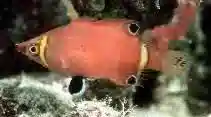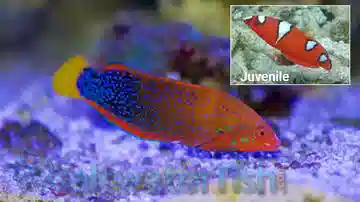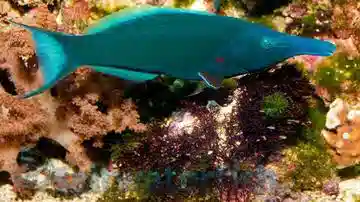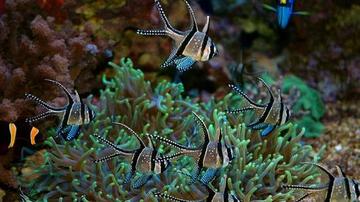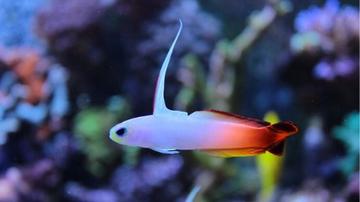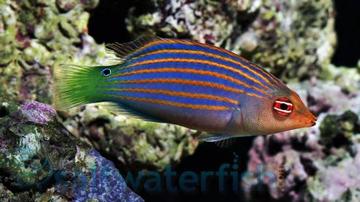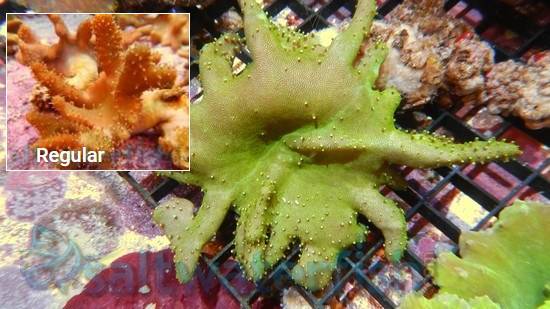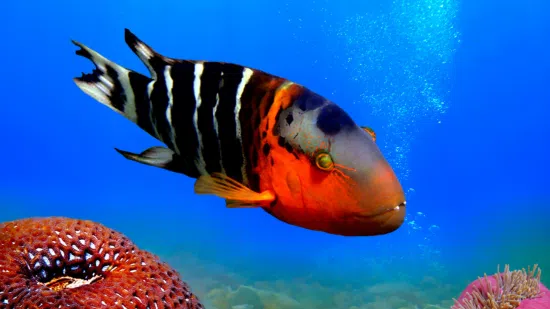Red Breasted Wrasse
Cheilinus fasciatus
(1 Reviews)
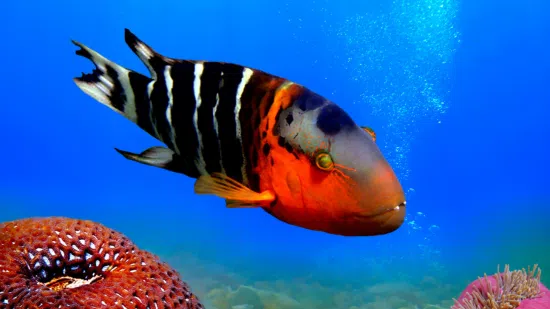
Red Breasted Wrasse
Cheilinus fasciatus
(1 Reviews)
{{ item.name }}
Size: {{ item.extra_field_3 }}
${{ getFormattedPrice(item.saleprice) }} ${{ getFormattedPrice(item.price) }}
To join the waiting list, click here
Free Shipping
With
$199.00
or more in Marine Life.
More details...
Red Breasted Wrasse Care Facts
| Care Level: | Moderate |
|---|---|
| Temperament: | Peaceful |
| Diet: | Carnivore |
| Reef Safe: | No |
| Minimum Tank Size: | 180 Gallons |
| Max Size: | 18 inches |
The Red Breasted Wrasse, Cheilinus fasciatus, also known as the Red-Breasted Wrasse, Red Breast Wrasse, Banded Maori Wrasse, Floral Wrasse, Red Breasted Maori Wrasse. This Wrasse is a very large and beautiful fish. They have a mostly tan to brown body with strong white stripes and red markings around its eyes. The Red Breasted Wrasse needs a tank with a lot of live rock, to take cover if they feel threatened. They are also known to rearrange your rock work and will eat small invertebrates and fish so they are not reef safe. Growing up to 16 inches these guys require a minimum tank size of 180 gallons for them to be comfortable. Feed them 1-2 times per day a diet of meaty saltwater foods such as krill, silversides, clams, and shrimp.
Red Breasted Wrasse
The Red Breasted Wrasse, scientifically known as Cheilinus fasciatus, is a captivating species cherished by marine aquarium hobbyists for its striking appearance and engaging behavior. This comprehensive guide is tailored to provide essential information for those interested in keeping this species in saltwater aquariums, covering various aspects, including habitat, reef compatibility, size, lifespan, diet, aquaculture availability, compatibility with other aquatic inhabitants, sexual dimorphism, coloration changes, temperament, tank requirements, and water conditions.
Habitat of the Red Breasted Wrasse
Originating from the tropical waters of the Indo-Pacific region, red-breasted wrasse is commonly found in coral reefs, rocky shores, and lagoons, preferring areas with ample hiding spots and moderate water movement.
Reef Compatibility of the Red Breasted Wrasse
Red-breasted wrasse is not considered reef-safe due to its tendency to consume small crustaceans, such as shrimp and crabs, commonly found in reef environments. Therefore, caution should be exercised when housing them in reef tanks with delicate invertebrates.
Size and Lifespan of the Red Breasted Wrasse
This species can grow up to 18 inches (45 cm) in length in the wild but typically reaches about 12 inches (30 cm) in captivity. They can live for over ten years in a well-maintained aquarium with proper care.
Diet of the Red Breasted Wrasse in Captivity
In captivity, Red Breasted Wrasse thrives on a varied diet consisting of high-quality marine pellets, frozen foods like mysis shrimp, brine shrimp, and chopped seafood. Regularly supplementing their diet with live foods can mimic their natural feeding behavior and ensure optimal health.
Aquaculture Availability of the Red Breasted Wrasse
While aquacultured specimens of Red Breasted Wrasse are not widely available, efforts are being made to increase their availability to hobbyists through sustainable aquaculture practices.
Compatibility of the Red Breasted Wrasse with Other Fish and Invertebrates
Red-breasted wrasse generally exhibit peaceful behavior towards tank mates but may show aggression towards smaller fish or those with a similar body shape. Compatible tank mates include larger, peaceful species such as Tangs, Angelfish, Triggerfish, and Hawkfish. However, careful monitoring is recommended to prevent any aggression or territorial disputes.
Sexual Dimorphism of the Red Breasted Wrasse
Sexual dimorphism in red-breasted wrasse is not prominently observed, making it challenging to distinguish between males and females based on physical characteristics alone.
Juvenile to Adult Coloration Changes in the Red Breasted Wrasse
Juvenile-breasted wrasses typically exhibit a duller coloration with brown and white stripes, gradually transitioning to vibrant shades of red, yellow, and blue as they mature into adults. The distinctive red coloration on their breast becomes more pronounced with age, adding to their allure.
Temperament of the Red Breasted Wrasse
Red-breasted wrasse are generally peaceful but may display territorial behavior towards conspecifics or other wrasse species. They are active swimmers and enjoy exploring their environment, making them a captivating addition to any marine aquarium.
Detailed Tank Requirements for the Red Breasted Wrasse
To ensure the well-being of Red Breasted Wrasse, a spacious aquarium with a minimum capacity of 180 gallons is recommended to accommodate their size and swimming behavior. The tank should have ample live rock formations, caves, and crevices to serve as hiding places and territories. Additionally, a secure lid is advisable to prevent potential jumpers.
Water Conditions for the Red Breasted Wrasse
- pH: 8.1-8.4
- Salinity: 1.020-1.025
- Water Temperature: 75-82°F (24-28°C)
- Water Flow: Moderate to high flow to mimic natural ocean currents.
Other Common Names for the Red Breasted Wrasse
- Banded Maori Wrasse
- Barcheek Wrasse
- Banded Cheek Wrasse
Five Compatible Tank Mates for the Red Breasted Wrasse
- Triggerfish (e.g., Picasso Triggerfish)
- Hawkfish (e.g., Flame Hawkfish)
- Moray Eels (e.g., Snowflake Moray Eel)
- Large Angelfish (e.g., Emperor Angelfish)
- Groupers (e.g., Panther Grouper)
Why Choose Red Breasted Wrasse from Saltwaterfish.com
Saltwaterfish.com prides itself on offering high-quality marine fish sourced from reputable suppliers with a focus on sustainability and ethical practices. By choosing Red Breasted Wrasse from Saltwaterfish.com, customers can be assured of healthy specimens, expert advice, and exceptional customer service, ensuring a rewarding and successful aquarium experience.
Great fish very beautiful a little shy but gets along with everyone
Reviewed by: Karen Mcgregor on March 8, 2019


